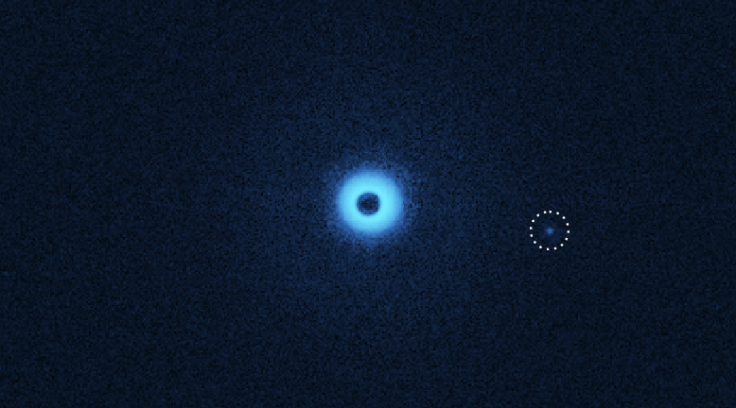Newborn Super Jupiter Or Brown Dwarf? Mysterious Companion Spotted Around Binary Star

Astronomers using European Space Observatory’s Very Large Telescope (VLT) have photographed a mysterious companion around a binary star system — an object that might be a newborn gas-giant or a young brown dwarf.
The mysterious object was noticed when the international team, led by researchers from Leiden University, the Netherlands, looked at binary star CS Cha, some 600 light years away from Earth in the southern constellation of Chameleon.
The double star system is very young, just two to three million years, and is surrounded by a proto-planetary disc where new planets form. The group wanted to study this disc and planets in the making but were surprised by witnessing a mysterious object.
It appeared as a tiny dot of light at the edge of images taken by the VLT’s Spectro-Polarimetric High-contrast Exoplanet Research instrument. That said, to confirm this is not a cosmological anomaly, they delved through other images of the same stellar region taken by the Hubble Space Telescope 19 years ago and VLT 11 years ago.
Even in those images, the tiny dot was seen; however, its light was a lot fainter than today. This confirmed the object is a companion of the binary and has been moving with it for a pretty long time.
Though the group is sure the object belongs to the binary, they still don’t have a picture clear enough to understand what type of object it is or how it came to be. They combined the observation with planetary models, but the results cannot be relied upon with 100 percent certainty.
However, according to a release from the group, there are two potential possibilities for the identified object. One is it could be a newborn, growing gas-giant, also known as a super Jupiter, while the other hints at a young brown dwarf, a “failed” star whose mass is greater than the heaviest gas-giants but smaller than the lightest stars.
“The most exciting part is that the light of the companion is highly polarized, and we suspect that the companion is surrounded by his own dust disc,” lead author Christian Ginski said in a statement. “The tricky part is that we can hardly fix the mass of the companion. So it could be a brown dwarf but also a super Jupiter in his toddler years. The classical planet-forming-models cannot help us."
The group now plans to take further observations from Atacama Large Millimeter Array to get more insight into the star and its companion. As ScienceAlert points out, the find, whenever it happens, would be a major breakthrough as not many extra-solar planets have been spotted directly.
The study, “First direct detection of a polarized companion outside of a resolved circumbinary disk around CS Cha?” has been accepted for publication in Astronomy & Astrophysics, and the arXiv preprint is available online.
© Copyright IBTimes 2024. All rights reserved.





















